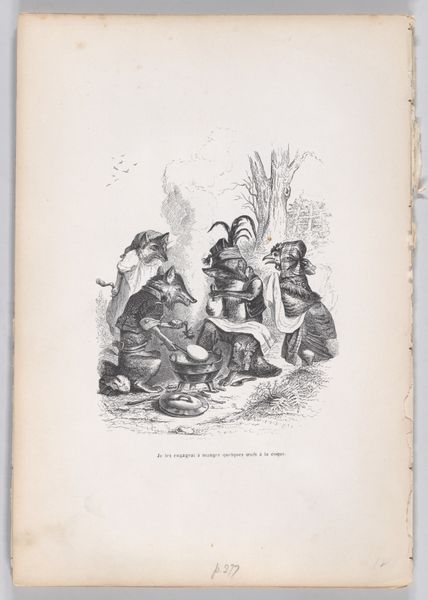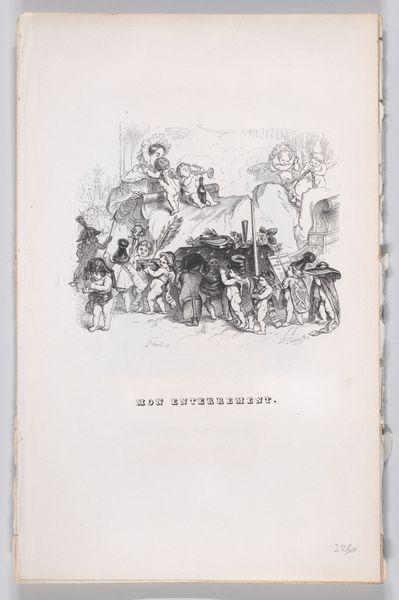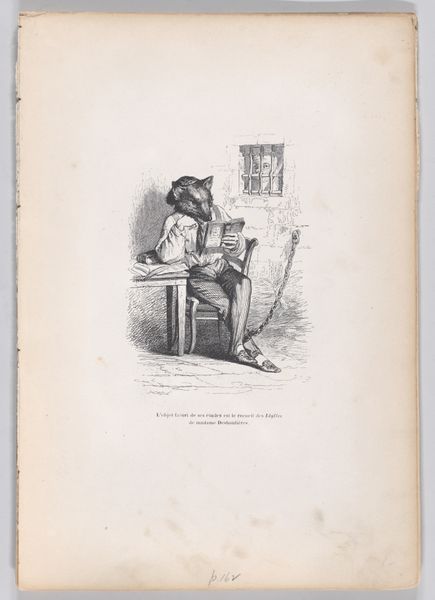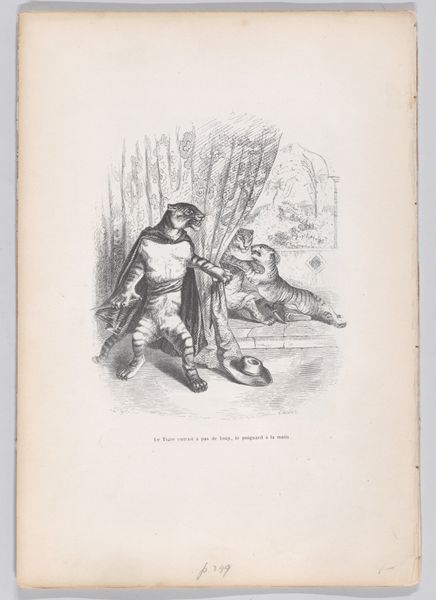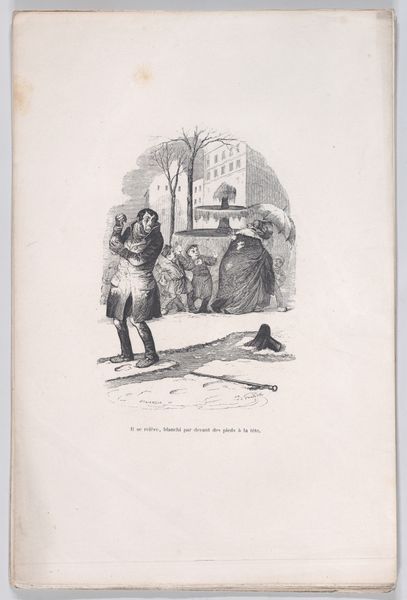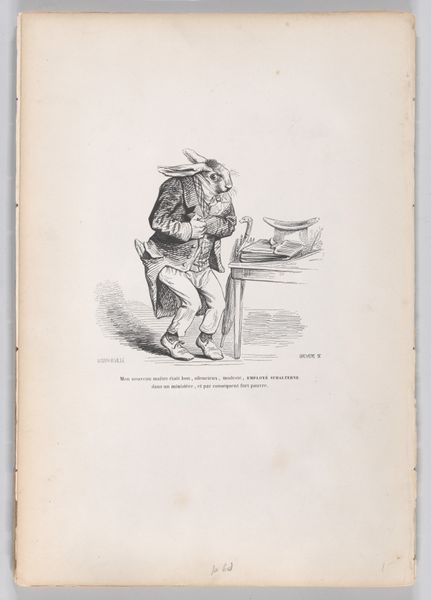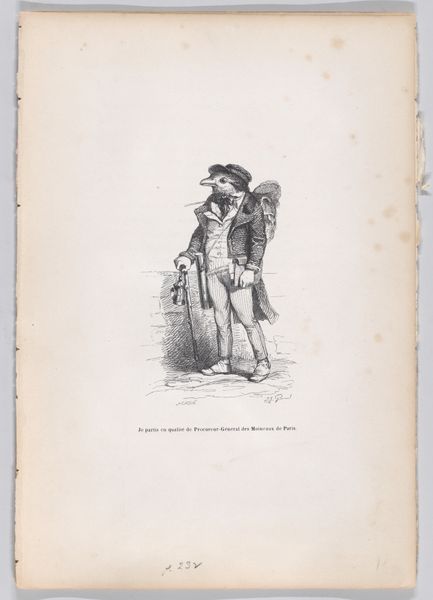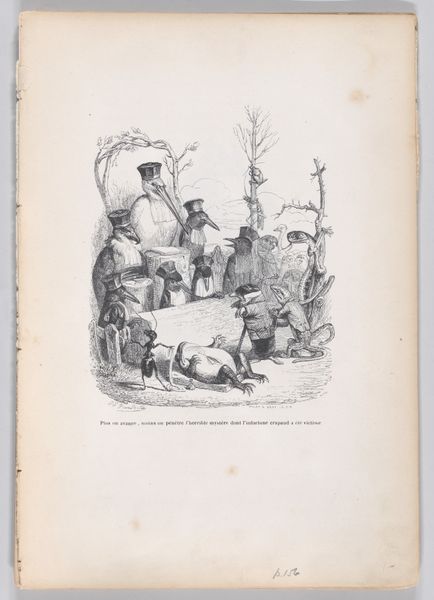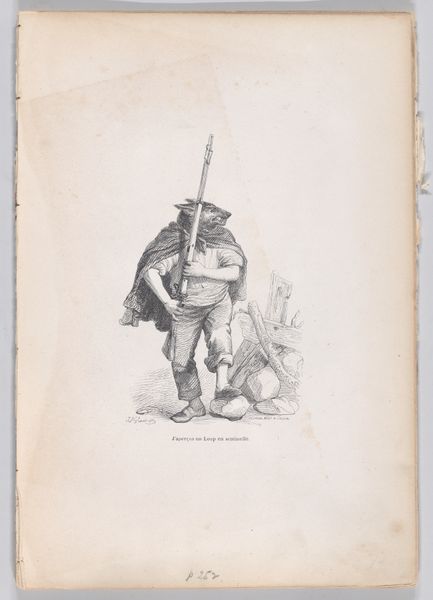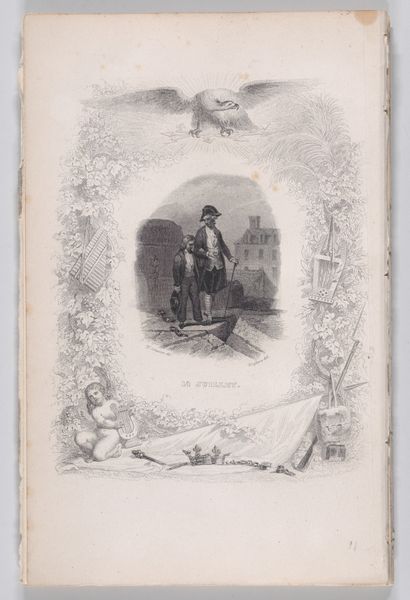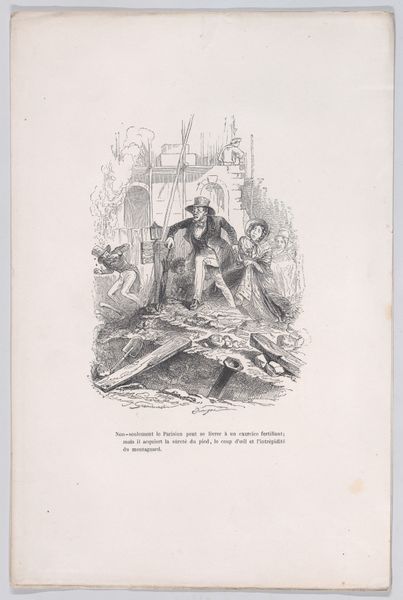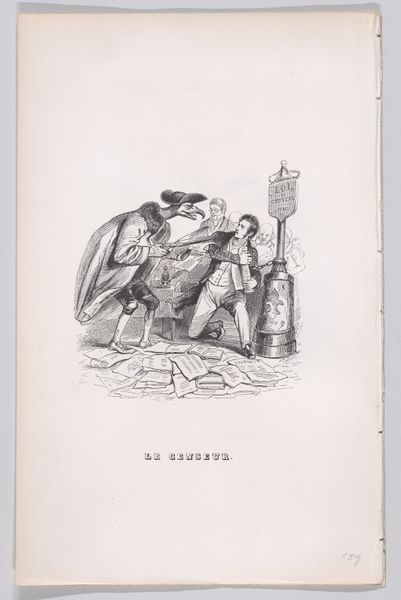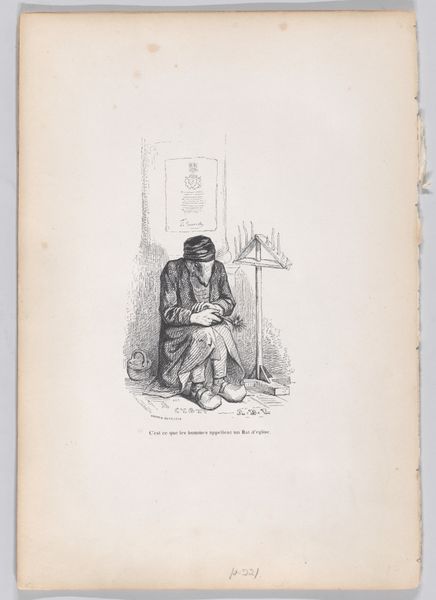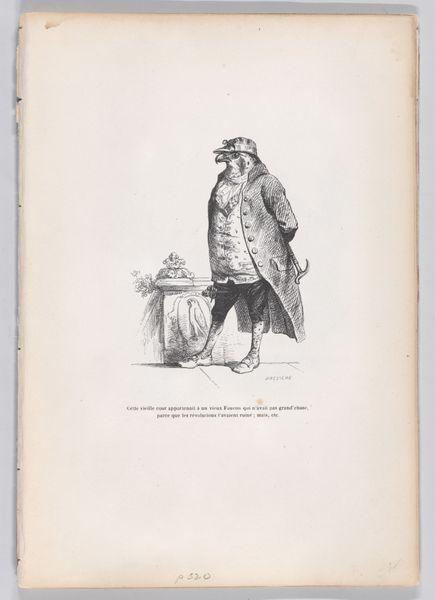
"The more beautiful the drama, the more sad the orchestra is to hear " from Scenes from the Private and Public Life of Animals 1832 - 1852
0:00
0:00
drawing, lithograph, print
#
drawing
#
lithograph
# print
#
caricature
#
romanticism
Dimensions: Sheet: 10 3/8 × 7 3/16 in. (26.3 × 18.3 cm)
Copyright: Public Domain
Curator: This lithograph, from J.J. Grandville’s "Scenes from the Private and Public Life of Animals," circa 1832-1852, certainly is curious. Editor: Indeed, the scene feels quite theatrical. The orchestra, depicted as animals, are performing, with one central figure playing the flute, almost in costume. I'm fascinated by the production elements involved in creating this image. What strikes you most about it? Curator: For me, it’s about understanding the mechanics of reproduction. Consider the lithographic process – the labor, the materials like the specific type of stone and ink required. Each print is a product, distributed and consumed within a specific market. The artist is a craftsman first. Editor: That's interesting! I was more focused on the satire of human emotions and society through the animal figures, reflecting the romantic style. Curator: Of course, but can we disconnect the imagery from the social context of its production? Think about the paper used: Where was it sourced? Who made it? These details shape our understanding just as much as Grandville’s artistic intention. Romanticism often masks its means. Editor: I hadn't considered the materiality impacting the artistic meaning to that extent. Does focusing on production, like the lithography stone, diminish the artist’s individual creativity in any way? Curator: Not at all. It enriches it. It reveals the artist embedded in a web of economic and social relations. It's a question of refocusing the lens on the real. Editor: So, by analyzing the lithographic process and the social factors involved, we get a richer understanding of the work, going beyond a purely aesthetic interpretation. Thank you. Curator: Precisely! Hopefully, this provides a framework to reassess Romantic artwork beyond individual expression.
Comments
No comments
Be the first to comment and join the conversation on the ultimate creative platform.
